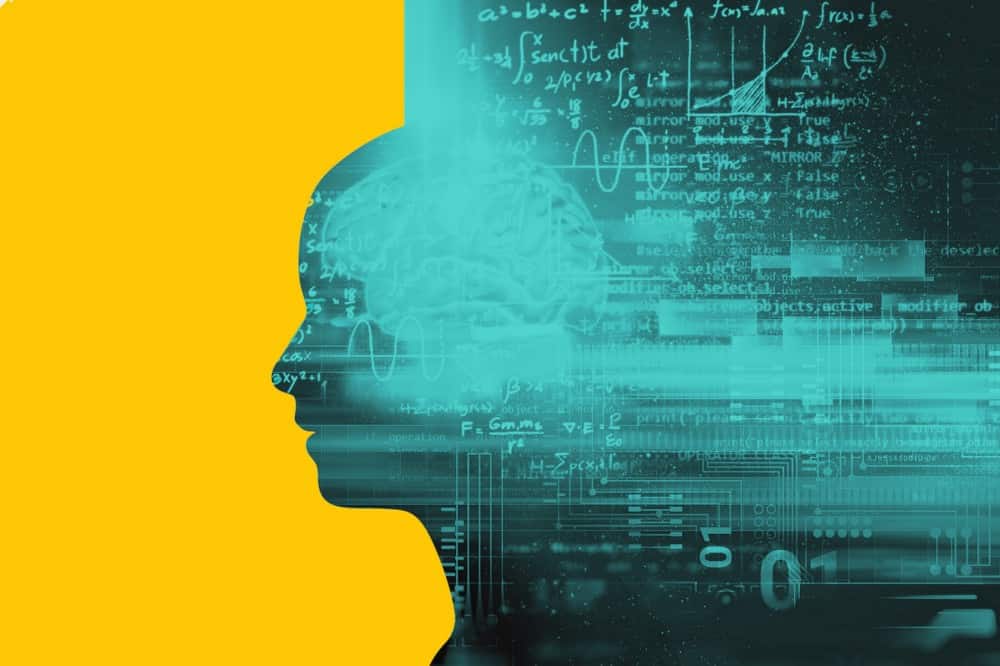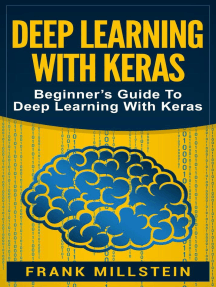
Federated Learning trains an algorithm on a number of decentralized edge servers using local data. Federated learning is a method that uses local data to train algorithms in parallel, instead of using centralized servers for data exchange. This method helps to overcome security issues that can be caused by centralized servers. However, federated Learning is not a good solution in all cases. For many organizations, federated learning is not possible.
Definition of federated education
Federated learning is a type of machine learning that allows the central model to learn from a wide variety of samples. This is useful for when multiple models need to be trained at different locations with different network and hardware conditions. A hospital's patient data may not be comparable to another hospital in the area. This is because patient characteristics are different between hospitals and may be very different. The patient characteristics, such as age distributions, gender ratios, and complex cases, can differ greatly among hospitals. Federated learning can be a cost-effective way to deploy and train a model at multiple locations with limited resources.
In federated learning, multiple devices can collectively learn a machine learning algorithm. These devices use data from their local systems, allowing them to update a single model with information from many different sources. They do not communicate model updates to the cloud. All information is encrypted and cannot be viewed by anyone. Mobile phones can thus study a common prediction modeling while still keeping the training data local.

Implementing federated education on edge devices
The implementation of federated learning on edge devices is an exciting opportunity for data scientists. Connected devices are generating increasing amounts of data, which requires a new learning paradigm. A new learning paradigm is required due to the increasing computational power and privacy concerns associated with these devices. This data must be stored locally and processed. Fortunately, it is relatively simple to implement federated learning on edge devices. These are just a few of the benefits. This emerging technology will help you in your data science endeavors.
Federated learning, also known as collaborative learning, is a method of training an algorithm on many edge devices. This is different from traditional centralized machine intelligence techniques that rely on one server to train models. By allowing training from multiple edge devices, different actors can develop a single machine learning model, despite the heterogeneous data sets. Moreover, this approach supports heterogeneous data, which is essential for many new applications.
Security issues with federated learning
FL's underlying philosophy is privacy protection. This principle works by reducing the user data footprint on a central server or network. FL is susceptible to security breaches. Additionally, technology is not yet mature enough to address all privacy issues by default. This section explores privacy concerns that FL has, and also discusses relevant advancements in the field. This article will provide a summary of some common security issues as well as possible solutions.
TEE (trusted execution environment) can be used to address the privacy issue in federated training. TEE is an encrypted environment in which code is executed in a protected area of the main processor. To prevent tampering of the data, all participants are protected by encryption. This is a more complex method than traditional multiparty computation. This method is also better for large-scale learning networks.

Potential uses for federated learning
Federalized learning is a way for medical practitioners to create machine learning models using non-colocated information. This can help avoid exposing sensitive patient data and violating privacy regulations. HIPAA and GDPR have strict guidelines for handling sensitive data. Federated learning can help to overcome these issues while still allowing scientists access to this data. Many potential uses of federated-learning for medical research exist.
One example of a potential use for federated learning is the development of a supervised machine-learning system. This can be used to train algorithms using large datasets. This method ensures that no information is divulged by using differential privacy and secure aggregate. This also makes it possible to improve performance on large datasets, such as the Wisconsin Breast Cancer database. As the name suggests, this system can also improve the accuracy of individual models in medical imaging.
FAQ
Why is AI so important?
According to estimates, the number of connected devices will reach trillions within 30 years. These devices will cover everything from fridges to cars. Internet of Things, or IoT, is the amalgamation of billions of devices together with the internet. IoT devices and the internet will communicate with one another, sharing information. They will also have the ability to make their own decisions. Based on past consumption patterns, a fridge could decide whether to order milk.
According to some estimates, there will be 50 million IoT devices by 2025. This is a great opportunity for companies. It also raises concerns about privacy and security.
What does AI mean for the workplace?
It will revolutionize the way we work. We'll be able to automate repetitive jobs and free employees to focus on higher-value activities.
It will improve customer service and help businesses deliver better products and services.
It will enable us to forecast future trends and identify opportunities.
It will allow organizations to gain a competitive advantage over their competitors.
Companies that fail to adopt AI will fall behind.
AI is useful for what?
Artificial intelligence is an area of computer science that deals with the simulation of intelligent behavior for practical applications such as robotics, natural language processing, game playing, etc.
AI is also referred to as machine learning, which is the study of how machines learn without explicitly programmed rules.
AI is being used for two main reasons:
-
To make our lives simpler.
-
To accomplish things more effectively than we could ever do them ourselves.
Self-driving vehicles are a great example. AI can take the place of a driver.
What does the future look like for AI?
Artificial intelligence (AI) is not about creating machines that are more intelligent than we, but rather learning from our mistakes and improving over time.
This means that machines need to learn how to learn.
This would enable us to create algorithms that teach each other through example.
Also, we should consider designing our own learning algorithms.
The most important thing here is ensuring they're flexible enough to adapt to any situation.
From where did AI develop?
Artificial intelligence began in 1950 when Alan Turing suggested a test for intelligent machines. He suggested that machines would be considered intelligent if they could fool people into believing they were speaking to another human.
John McCarthy later took up the idea and wrote an essay titled "Can Machines Think?" John McCarthy, who wrote an essay called "Can Machines think?" in 1956. He described in it the problems that AI researchers face and proposed possible solutions.
How does AI work
An artificial neural network consists of many simple processors named neurons. Each neuron takes inputs from other neurons, and then uses mathematical operations to process them.
The layers of neurons are called layers. Each layer has its own function. The first layer receives raw data, such as sounds and images. These data are passed to the next layer. The next layer then processes them further. Finally, the output is produced by the final layer.
Each neuron has a weighting value associated with it. This value is multiplied each time new input arrives to add it to the weighted total of all previous values. If the result exceeds zero, the neuron will activate. It sends a signal down to the next neuron, telling it what to do.
This process continues until you reach the end of your network. Here are the final results.
Statistics
- Additionally, keeping in mind the current crisis, the AI is designed in a manner where it reduces the carbon footprint by 20-40%. (analyticsinsight.net)
- In the first half of 2017, the company discovered and banned 300,000 terrorist-linked accounts, 95 percent of which were found by non-human, artificially intelligent machines. (builtin.com)
- In 2019, AI adoption among large companies increased by 47% compared to 2018, according to the latest Artificial IntelligenceIndex report. (marsner.com)
- The company's AI team trained an image recognition model to 85 percent accuracy using billions of public Instagram photos tagged with hashtags. (builtin.com)
- According to the company's website, more than 800 financial firms use AlphaSense, including some Fortune 500 corporations. (builtin.com)
External Links
How To
How to make an AI program simple
To build a simple AI program, you'll need to know how to code. There are many programming languages to choose from, but Python is our preferred choice because of its simplicity and the abundance of online resources, like YouTube videos, courses and tutorials.
Here's a quick tutorial on how to set up a basic project called 'Hello World'.
You will first need to create a new file. This can be done using Ctrl+N (Windows) or Command+N (Macs).
Next, type hello world into this box. To save the file, press Enter.
Press F5 to launch the program.
The program should say "Hello World!"
However, this is just the beginning. These tutorials can help you make more advanced programs.